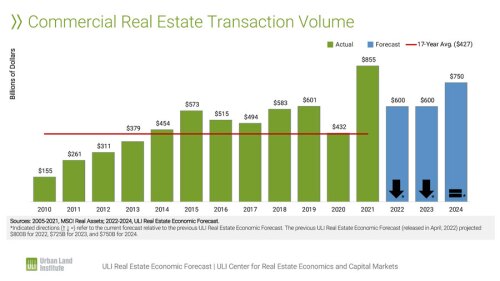As gurus and gadgeteers gathered for the annual Consumer Electronics Show in Las Vegas, a unique fusion occurred. Real estate, which ultimately is about presence, met smartphones and other devices that link people and places.
The organizers’ theme, “The Internet of Things,” focused on the implications of the internet for communications and computing equipment and the software that drives it. From the array of innovations showcased—some disruptive, most complementary—I distilled five pillars that will support the real estate industry, professions, and research.
Consumer data: Consumers’ preferences and buying patterns are anticipated from their digital choices—a breakthrough capability, not only for retailers but also for workplace designers and developers. By scaling and distributing analytics on personal communications, locations, and colleague and customer interactions, this far-reaching innovation integrates real-time data on individuals’ whereabouts and activity levels with their real estate usage. Each transaction yields site- and product-specific data to further deepen owners’ understanding of how properties are used.
Disney is unveiling consumer-wearable bands to source theme park metrics for better planning and services. Apple’s online stores have revolutionized software development, distribution, and sales. Will future real estate developers follow Apple’s lead in online sales and take a 30 percent cut of their tenants’ sales or incomes for creating the environments and experiences in which those revenues are produced? Retail developers have long approached this through the percentage lease. A radical model for workspace and entertainment venues is equally valid.
Portfolio strategies: Corporate sites are assembled into multitiered regional/metro/submarket portfolios by amassing ground-level decisions on utilization, valuation, pricing, and disposition that employee-users make through their smartphones and social media. For example, CoStar and Zillow have refashioned property-level transaction data using digital technology; building investment and operations management will not be far behind. Will we see the real estate equivalent of the Bloomberg workstation terminal, miniaturized for handheld devices, making markets by institutionalizing individual deals through sweeping large-scale portfolio transactions?
Many technology entrepreneurs create their businesses to “change the world.” They share values with developers who build communities in which new enterprises flourish and—paraphrasing ULI’s mission statement—provide leadership in the responsible use of land. Much as mixed-use developments have dismantled traditional barriers among residential, office, retail, and entertainment uses, the “internet of things” helps consumers to integrate technology with their work-life choices.
Mobility tracking: Movement patterns and modes (e.g., car, train, bike) are discerned by tracking routes, frequencies, changes, costs, and pricing. While real estate is defined by physical attributes, its management is mainly about information. Brokers historically controlled the underlying data and their flow into the market, claiming unique knowledge that consumers, and even investors, could not otherwise access.
No longer. The internet has routinized data access and distribution. But we have not yet standardized the metrics that enable robust comparisons across asset types, sectors, and geographies. That breakthrough awaits a combined industry/academic/practitioner initiative. Once standards have been agreed upon, technology purveyors will readily disseminate the knowledge.
Smartphones capture vast amounts of consumer data; cars and buildings will be next. Google’s recent deal with automakers connects the car to web services without the fuss of phones. Watch for first-mover property managers to directly connect their buildings without intermediation by costly, cumbersome communications providers.
Modeling: “3-D printer” technology can replicate models from computer-assisted design (CAD), photo montages, and other established design tools. By using architects’ and engineers’ original data, real estate concepts and images can be visualized three-dimensionally for agents’ use in supporting customers’ review and decision making.
Handheld devices now have the same computing power as the mainframes of yesteryear. That not only saves substantial space—in one company, the equivalent of 1 million square feet (93,000 sq m)—but also untethers thousands of users who had been supported by massive equipment and technical staffs.
Touchless sensors, initially used for lighting, have morphed to cover most electronic and physical sensations; moods will be next. Architects and developers can conceive building design features, such as soundproofing, and operating systems opportunities, such as renewables, directly from sensor data. If they know empirically that, say, 900 occupants—or 90 percent of a building’s total—turn down the temperature controls, complain about noise, or interact with peers in another country, for example, the designers can conceive design features and specs from the data across geographies, asset classes, property types, and so on.
Software applications enable individuals to make furniture and decorating decisions while construction is underway and during the entire occupancy life cycle. These may total 25 percent or more of the real estate costs. Over time, such applications could displace interior designers who—if sufficiently nimble—will recast themselves as design coaches and logistics managers. Clients will browse the internet and select their furniture, fixtures, and equipment (FFE) online, relying on the coach’s direction and follow-through to procure, supply, and place the goods.
Learning devices: Smartphones are “learning,” mimicking individual preferences through buying and usage activities, from workouts to shopping to leisure; calculating repetitions and durations; and surfacing new opportunities by trolling databases that elude even the most astute manual analysts. Thus, an employee’s use of workspace, amenities, and living space forms the backbone of future real estate design.
The continuous data feed from occupants’ devices will be a boon to property managers whose current technologies limit their visibility on buildings’ behavior—that is, how well offices, shops, and other gathering spaces foster productive social and commercial interactions. In the next decade, technology will match—and possibly supplant—location as the main lever of real estate economics and, consequently, of urban form and function.
Facebook and other data aggregators can disrupt real estate by tracking the ways tenants and consumers use buildings and their settings. While individuals have some control over their smartphones’ data, buildings can operate the collectors’ systems 24/7, providing continuous feeds on both tenants’ and consumers’ real estate behaviors. This knowledge will further reframe long-held assumptions on the roles of place and space in people’s lives.
Significant risks—mainly, invasion of privacy and misuse of data—are embedded in these pillars. But the best real estate professionals are expert risk managers; they will learn to manage data risks as deftly as they do market and financial risks.
The internet has revolutionized our time. It is en route to changing where and how we live and work. Real estate—in all its forms—should be poised to meet these new demands.
Sandy Apgar advises senior executives and board members on real estate strategy and management. An award-winning consultant, author, and public official, he is a long-serving ULI member and ULI Foundation governor, and has chaired three ULI product councils.




